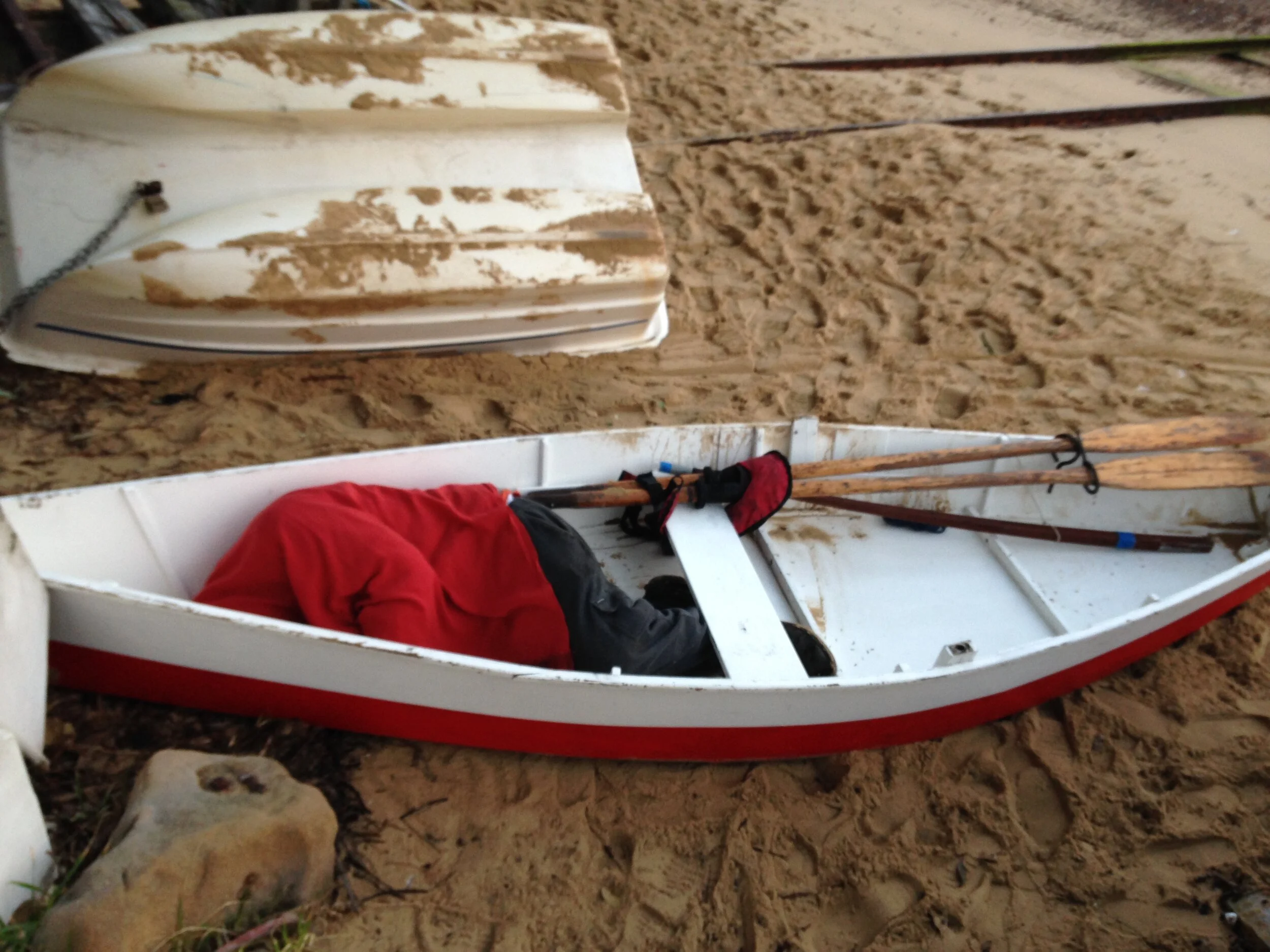My First Boat - Part 2
For a dinghy that was built out of a couple of sheets of plywood and some cheap pine, it’s lasted remarkably well. This is largely due to the fact that it’s been used often, with saltwater always passing over her bottom. She’s never been coated with epoxy and never had any fibreglass on her. She’s just had a good lick of house paint every few years.
As for performance, she’s a great little lightweight rower. She’s only 11’ 6” by 3’ 7”, the sides are 4mm ply and the bottom is 6mm, meaning that a strong person can pick her up and move her if need be. One can get carried away by the elegance of a curvaceous hull, but it’s hard to beat the rugged simplicity and beauty of a flattie.
The other day, for the first time, I lost the boat. I went down to the riverbank and realised it was missing. This wasn’t overly alarming as she does tend to travel and get left at boat clubs or on moorings every so often. My father and I share it pretty evenly as we both use it to get out to our bigger boats and when asked, my father said he hadn’t seen it for a few days. With a slight air of concern, I decided to go for a run in the tinny the next day and track it down. I was almost finished dreaming about the boat I was going to build to replace her when I spotted a little yellow dinghy … about 3 miles up the river, sitting safely on a pontoon. As I was untying her the owners came down. I explained the significance of the boat and they seemed as delighted as I was that I’d found her.
For a while I worked in Sydney. At one point I was living not too far from the harbour and I used to walk to the beach and row to work each day. Although it took about twice as long as catching the bus, watching the sun come up over the Sydney Harbour Bridge from a rowing boat is quite a magical experience.
Sound asleep
One morning I went down to the beach and discovered that someone had turned my boat upright. This was one of those situations where one cannot quite work out what their eyes are seeing, but, with each step one takes, it becomes a little clearer. As I got closer it seemed that someone had put some sail covers in my boat – red covers. That seemed a bit odd. It wasn’t until I was right beside the boat that I realised that the covers were actually clothes – a jacket and pants – and there was someone wearing them, asleep. What a shock for an early morning. It didn’t take me long to wake up the vagrant. However, it took a bit of convincing for him to realise that I wasn’t going to let him continue sleeping, despite his pleas! I explained that I had to get to work. That morning I had the strange displeasure of rowing to work with the feint smell of urine accompanying me. I could only laugh at the situation. With a degree of pride I realised that, to at least one person, my boat looked like the most comfortable boat on the beach.
My best memories of this boat aren’t of intrepid voyages of exploration, nor are they of the many fish that have been dragged over the gunwales, nor of the rushed mornings running late for school or work. Not even of the misty Sydney Harbour sunrises. My best memories of this boat are of the beautiful meditative hours I’ve spent rowing in the afternoons and evenings of my teenage years.
She’s always been a rough and tumble little boat, not the sort where it was necessary to watch out for the finish – just as a dinghy should be. Every few years the boat gets a birthday treat. This usually involves replacing a bit of timber, a quick sand and a coat of paint. The only parts of the boat that have never been replaced are the chines, sides, inner stem and centre frame. Everything else has been replaced at least once, but just like the farmer’s axe – that’s had 3 new handles and 2 new heads – it’s still the same boat. I’m sure one day the sides will be replaced, and there won’t be any of the original boat left, but it’ll still be the dinghy that taught me to row.
Post restoration, on the ramp next to the nutshell.


